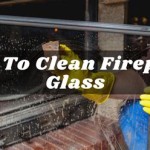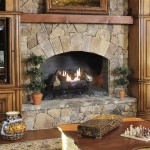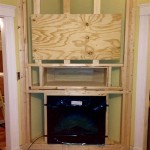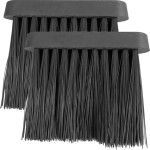Outdoor Patio Fireplace Ideas: Creating a Warm and Inviting Outdoor Space
An outdoor patio fireplace can transform a simple backyard into a captivating and comfortable living space. Beyond providing warmth on chilly evenings, a fireplace acts as a focal point, enhancing the aesthetic appeal and functionality of a patio. The choices are as diverse as individual preferences, ranging from traditional wood-burning models to convenient gas-powered options and even modern electric alternatives. Each type offers distinct benefits and considerations, impacting design, functionality, and overall ambiance.
Selecting the right outdoor fireplace necessitates a thorough understanding of the various types available, alongside consideration of location, style, and budget. This ensures the fireplace seamlessly integrates into the existing landscape and meets the specific needs and desires of the homeowner.
Selecting the Right Type of Outdoor Fireplace
The primary consideration when selecting an outdoor fireplace revolves around the fuel source: wood, gas, or electricity. Each option presents its own set of advantages and disadvantages. Understanding these nuances is crucial for making an informed decision.
Wood-burning fireplaces offer a classic, rustic charm and the undeniable aroma of burning wood. They provide intense heat and create a traditional campfire ambiance. However, wood-burning fireplaces require a readily available supply of firewood and entail a level of maintenance, including cleaning ashes and ensuring proper ventilation to minimize smoke. Furthermore, local regulations may restrict or prohibit wood-burning fireplaces in certain areas due to air quality concerns.
Gas fireplaces, fueled by natural gas or propane, offer convenience and ease of use. They ignite instantly and provide consistent, adjustable heat. Gas fireplaces require less maintenance than wood-burning models and are generally cleaner, producing little to no smoke. Installation typically involves connecting to a gas line, which may require professional assistance. While the initial cost of a gas fireplace can be higher than a wood-burning option, the long-term convenience and reduced maintenance can offset this expense.
Electric fireplaces represent a modern, hassle-free alternative. They require no venting or fuel lines and can be easily installed by simply plugging them into an electrical outlet. Electric fireplaces offer a clean and efficient source of heat and often include features such as adjustable flame settings and remote control operation. While electric fireplaces may not generate the same level of radiant heat as wood or gas models, they are an excellent option for smaller patios or areas where traditional fuel sources are not feasible or desired.
Design and Style Considerations for Outdoor Fireplaces
An outdoor fireplace should not only provide warmth and ambiance but also complement the overall design and style of the patio and surrounding landscape. The design options are vast, ranging from traditional brick or stone fireplaces to contemporary metal or concrete structures.
Traditional brick or stone fireplaces exude a timeless elegance and blend seamlessly with classic architectural styles. These fireplaces can be customized with various stone types, brick patterns, and decorative elements to create a unique and visually appealing focal point. The durable nature of brick and stone ensures that these fireplaces will withstand the elements for years to come.
Modern metal or concrete fireplaces offer a sleek and contemporary aesthetic. These fireplaces often feature clean lines, minimalist designs, and a focus on functionality. Metal fireplaces can be crafted from materials such as stainless steel or corten steel, offering durability and a distinctive industrial look. Concrete fireplaces can be molded into various shapes and sizes, providing versatility in design and allowing for integration with modern patio furniture and landscaping elements.
In addition to the overall design, the style of the fireplace can be further enhanced through the addition of features such as mantels, hearths, and decorative surrounds. A mantel provides a surface for displaying plants, candles, or other decorative items, while a hearth serves as a functional and aesthetic base for the fireplace. Decorative surrounds can be crafted from various materials, such as tile, stone, or metal, to add visual interest and personalize the fireplace's appearance.
The placement of the fireplace also significantly impacts the overall design and functionality of the patio. Ideally, the fireplace should be situated in a location that provides shelter from the wind and allows for comfortable seating arrangements around the fire. Consideration should be given to the prevailing winds in the area, as well as the proximity to neighboring properties to minimize any potential disturbance from smoke or noise.
Materials and Construction of Outdoor Fireplaces
The materials used in the construction of an outdoor fireplace influence its durability, lifespan, and aesthetic appeal. Choosing durable, weather-resistant materials is essential for ensuring the fireplace can withstand the elements and maintain its structural integrity over time.
Brick and stone are popular choices for outdoor fireplaces due to their inherent durability and resistance to heat and moisture. These materials are capable of withstanding extreme temperatures and weather conditions without significant deterioration. When selecting brick or stone, it is crucial to choose materials that are specifically designed for outdoor use and are resistant to cracking, chipping, or fading. Mortar, the binding agent used to hold the bricks or stones together, should also be specifically designed for outdoor applications and able to withstand freeze-thaw cycles.
Metal, particularly stainless steel and corten steel, offers a modern and durable alternative to traditional brick and stone. Stainless steel is highly resistant to corrosion and rust, making it an excellent choice for outdoor environments. Corten steel, also known as weathering steel, develops a protective layer of rust over time, which prevents further corrosion and provides a unique aesthetic appeal. Metal fireplaces are often lighter than brick or stone fireplaces, making them easier to install and move.
Concrete is another versatile material that can be used to construct outdoor fireplaces. Concrete fireplaces can be molded into various shapes and sizes, offering greater design flexibility. Concrete is durable and weather-resistant, but it is also porous and can be susceptible to staining or cracking if not properly sealed. Sealing the concrete with a protective coating helps to prevent water absorption and protect the surface from damage.
The construction of an outdoor fireplace, especially wood-burning or gas-powered models, often requires adherence to local building codes and regulations. These codes may specify requirements for chimney height, clearances from combustible materials, and other safety features. It is advisable to consult with a qualified contractor or building inspector to ensure that the fireplace is constructed in compliance with all applicable codes and regulations. Improper installation can pose fire hazards and potentially result in fines or legal liabilities.
Beyond the primary building materials, other components of the fireplace, such as the firebox, chimney, and flue, should also be constructed from durable and heat-resistant materials. The firebox is the chamber where the fire burns and should be lined with firebrick or other refractory materials to withstand the intense heat. The chimney is responsible for venting smoke and gases away from the patio area and should be constructed from materials that are resistant to corrosion and heat. The flue is the inner lining of the chimney and should be properly sized to ensure adequate draft and prevent backdrafting.
Regular maintenance is essential for prolonging the lifespan of an outdoor fireplace. This includes cleaning the firebox to remove ashes and debris, inspecting the chimney for obstructions, and checking for any signs of damage or deterioration. Addressing any issues promptly can prevent them from escalating into more significant problems and ensure the fireplace remains safe and functional for years to come.
In conclusion, selecting and constructing an outdoor patio fireplace involves careful consideration of various factors, including fuel source, design, materials, and construction requirements. A well-planned and properly installed fireplace can transform an outdoor space into a warm, inviting, and aesthetically pleasing extension of the home, providing years of enjoyment.

30 Outdoor Fireplace Ideas Cozy Fireplaces

Five Fabulous Outdoor Fireplace Ideas Coogans Landscape Design

Outdoor Fireplace Ideas The Home Depot

Outdoor Fireplace Design Ideas Getting Cozy With 10 Designs Unilock

Dream Outdoor Kitchen Landscaping Ideas Backyard Patio Designs

45 Beautiful Outdoor Fireplace Ideas Install It Direct
:max_bytes(150000):strip_icc()/bring-holidays-outside-x-50f80e4865984b36b603a1de82d2938b.jpg?strip=all)
Glowing Outdoor Fireplace Ideas

4 Outdoor Fireplace Ideas For Your Arizona Landscape

Outdoor Fireplace Design Secrets From An Expert

57 Patio Fireplace Ideas To Elevate Your Outdoor Space Rustic Fireplaces Sloped Backyard Furniture Backyards
Related Posts








